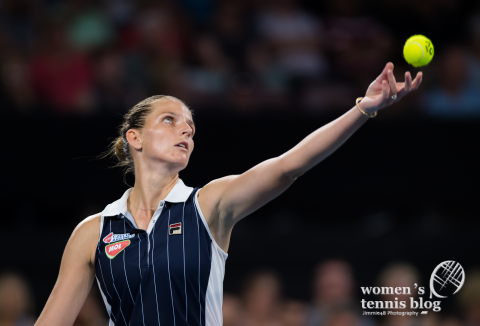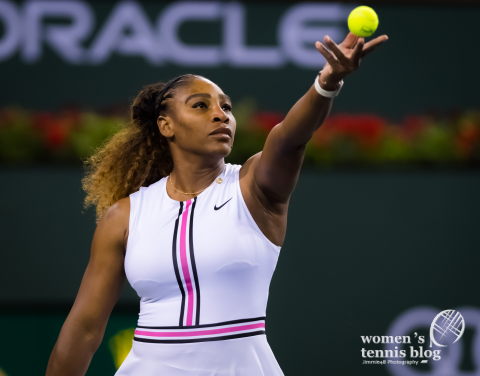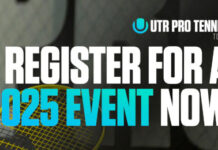Coach Marcin Bieniek, founder of instructional Enjoy Tennis Blog, explains the specific aspects of a second serve in tennis and how you can maximize your success rate when it comes to this shot.
A lot of players hesitate to hit a second serve because they are afraid of making a double fault. There is no doubt that it really hurts when we can’t put one of the two balls into the service box, since it decreases our chances of winning our service game. To prevent this situation from happening, players should work on their second serve skills.

Serve is not similar to any other stroke in tennis. Every point in tennis starts with serve, so this stroke can put a player into offensive, neutral or defensive situation right from the start. Another factor that distinguishes serve from other strokes is the fact that the opponent doesn’t have an impact on this shot. Server has 20 seconds to plan everything and hit serve without any external impact.
There is one more thing that should be pointed out: if you miss the first serve, you don’t lose the point, as you still have the second delivery. That is the only situation in tennis when missing a shot doesn’t cost you a point.
Double faults can be a nightmare for athletes. Too many double faults during a game can cost players the match, even when they play really well from the baseline. When the starting shot is not working properly, the chance of winning a match drops significantly. As with any stroke in tennis, a combination of technical, tactical, physical and mental aspects needs to be trained to develop a solid second serve and avoid unnecessary double faults. By not missing your second serve, you start to feel more comfortable with your performance and you make your opponent work harder to win any point.
Here are the areas that you should include in your practice to trust your serve and never give easy points to your rivals:
Technical components
Continental grip.
Toss over the head.
Spin.
These are three things that your second serve should include. If you miss one of them, your technical quality will drop and you will have problems achieving expected consistency during matches. We have to remember that stress can make our motion less fluent, so if there are any weaknesses in the motion, they will be immediately visible during crucial points of competition.
 Tactical components
Tactical components
Your decision related to the area you aim at has a big impact on the final quality of your second serve. A lot of players think only about making the serve in, but this approach is too general and it can’t guarantee good results. Always think about the direction of your second serve (forehand, body, backhand), but remember to aim further from the lines to give yourself some margin of error.
Physical components
Your body is your machine. Players who don’t control their body or have some weaknesses in physical preparation will always make more double faults than athletes who consistently perform fitness workouts. When your muscles get tired pretty quickly or you lack flexibility in some areas, you are not able to perform fluent motion, especially after playing for some time. Take care of your body consistently and you will see the difference, not only in the mirror, but also in the stats of the second serve percentage.
Mental components
It is impossible to perform well in individual sport without solid mental preparation. Crucial points in tennis always increase the stress level and the second serve is definitely one of moments when hands can start to shake. To deal effectively with this challenge and put the second serve in, you have to stay positive, be confident about your skills and focus on things that are under your control. This will guarantee good mindset and definitely decrease the possibility of missing the second serve.
No shots in tennis are more important than the others, but there are definitely shots that occur more often than the others. The second serve is one of them, so practicing it should be a priority. Start working on your second serve from different perspectives and you will see that you will have delivery that won’t break down even when you face break points.
Visit our Tennis Tips page for a lot more articles by tennis coaches. There you can learn how to improve specific shots and skills, handle pressure, control your emotions, adapt your game to all surfaces and weather conditions, choose the best tennis racquet, and much more.




